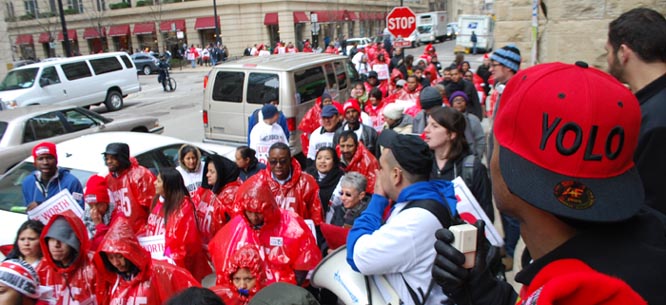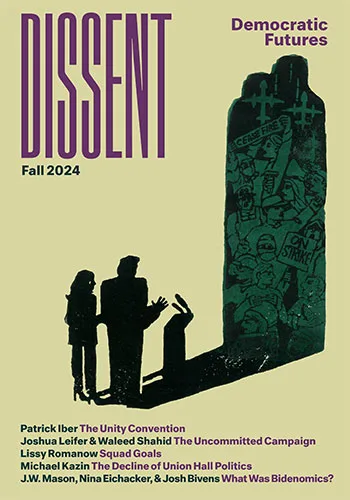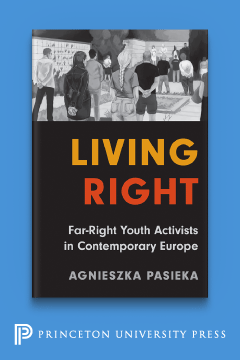Low Wage Workers Strike—Because YOLO
Low Wage Workers Strike—Because YOLO
For low-wage workers, it’s almost insanely risky to strike. This Wednesday, they went on strike in Chicago. Why? YOLO.

At 5:30 a.m. Wednesday morning, in a frigid drizzle outside Chicago’s main commuter train terminal Union Station, an African-American fast-food worker in his early twenties who was on strike for the day screamed into a bullhorn atop a marble embankment, his voice already hoarse before most of the city was awake. His red baseball cap was backward, and when he turned to face bleary-eyed commuters, I could read what it said: “YOLO.”
I’m not sure if the striker’s choice in headgear for the day was intentional. Given the popularity of the acronym, which stands for “you only live once” and has made its way in youth culture from hip hop videos to resistance to standardized tests, he may wear it often. But the phrase seemed a fitting sentiment for a day in which several hundred nonunion fast-food and retail workers walked off the job in Chicago, organized and backed by a community-labor coalition called Fight for 15 and demanding $15 per hour and a union. They followed fast-food workers in New York City in November and earlier this month, and are leading a new push for service workers making miserably low wages and living in poverty. It could be the burgeoning movement’s new slogan: strike, because… YOLO.
As union membership in heavy industry has steadily declined in recent decades, a handful of unions have begun taking organizing low-wage sectors seriously. There is historical precedent to such efforts, but aside from a few recent efforts, fast food and retail have long been thought of as unorganizable, with the high turnover and fragmented workforce making unionization particularly difficult.
But the recent campaigns in New York and Chicago, likely to spread to other cities, indicate that the Service Employees International Union and other unions backing the effort are willing to give organizing these industries a shot, providing the serious staffing and financial resources required to organize an industry so hostile to unions. I spent Wednesday and Thursday with these workers in Chicago. While large-scale shifts in fast food and retail appear far off, there was some hope to be found at this week’s strike sites.
The Strike’s Back?
Nationally, the use of the strike as a tactic by unions is at an all-time low, while employer lockouts are on the rise. Joe Burns argues in a recent book widely debated in labor circles that production-disrupting strikes—strikes that prevent employers from earning profits—will be central to labor’s revival.
The New York and Chicago actions were not such strikes. They were short-lived, generating serious publicity but not necessarily shutting down business; although some businesses were short-staffed or even shuttered for a time, like during the Walmart retail strikes last year, many saw only a small number of workers strike. I was at Chicago’s Nike store where three workers were striking. I watched business continue as usual through the windows, save for the occasional pacing, nervous managers eyeing their striking employees out front.
Not much production was halted in these actions—the key, according to Burns, to most strikes’ success.* But the use of the strike was critical, because in addition to serving as a highly visible form of struggle for strikers’ coworkers and other similar workers, it legitimized the act of walking off the job as an offensive bargaining tactic against an employer.
The phrase for the day was “Strike for 15,” alluding to the workers’ demand of a $15 per hour wage. It wasn’t, say, “unite to live better,” or some other bloodless slogan crafted through hours of focus groups by a contracted PR firm to be as inoffensive as possible—it was a battle cry. There was no push for respectful negotiations to advance the common interests of workers and management—instead, there was the collective action equivalent of a middle finger to management. The action of workers withdrawing their labor wasn’t a last-ditch tactic used reluctantly after all other options had been exhausted—it was the principal means through which they would win this demand. And withdraw their labor they did, joyously and unapologetically.
Even if Wednesday’s actions barely hurt employers’ bottom lines, workers embraced the strike as a tactic. (At a recent packed organizing meeting of workers deciding whether or not to strike, one worker mentioned the Chicago Teachers Union’s recent strike, and the room immediately broke into applause.) Now a bit more comfortable with the tactic, those workers will likely be more willing to engage in strikes with all of their coworkers that can actually halt capital accumulation in its tracks. If Joe Burns’s claims are to be believed, that’s a good thing.
Fifteen or Fight
The first half of the day’s slogan was the tactic; the second was the demand. And it was an audacious one: $15 an hour.
Such a demand is, of course, rather unrealistic, if not in theory then in practice. Many union workers have to fight tooth and nail during contract fights just to get raises that keep pace with inflation; a raise from Illinois’s minimum wage of $8.25 to $15 would amount to a hike of almost 82 percent.
But it’s refreshing to see a group of workers make such unabashedly grandiose demands. In the age of austerity, most any attempt by the working class to lessen its misery is seen as unrealistic and absurd, as evidence that workers didn’t get the memo about sacrifice across the board. Bold demands like these can help break that spell.
Orienting the campaign toward such lofty goals often has the practical effect of raising workers’ expectations to new heights—one of the Left’s principal tasks.
With a crowd of several hundred around him, Chris Thomas, a twenty-five-year-old Nike worker of four years, stood in front of his employer Wednesday afternoon and stated through a bullhorn, “I’ve noticed a trend in this country. Workers’ productivity keeps going up, but wages stay down. If the minimum wage kept pace with productivity, we’d be making $22 an hour. So $15 seems pretty reasonable to me.”
Put that way, the demand for $15 doesn’t sound so audacious after all.
Will There be a Next Generation of Labor?
Workers emphasized that stereotypes of the retail and fast industries as populated by teenagers looking for extra spending money are wrong; workers spend years in these industries, often supporting families. A recent study by two Chicago nonprofits confirms this, noting that 94 percent of low-wage workers in the city are over twenty and 57.4 percent are over thirty (in a city where such jobs now make up nearly one-third of the entire workforce).
Still, many of Wednesday’s strikers were young workers, in their late teens and twenties. It’s a demographic labor has long wrung its hands over, cognizant of its own distance from young people. (Last year, in a piece about labor’s future, Harold Meyerson asked a fair question: “Will anyone under 30…even notice if unions cease to be?”) The AFL-CIO held a “Young Workers Summit” in 2011, later forming a young workers’ advisory board. Yawn.
The New York and Chicago campaigns have taken what should be a self-evident step to engage with young people: they’ve organized in industries where many young workers can be found.
The result: when unions educate, agitate, and organize those young people, they are willing to engage in militant actions like strikes, and quickly begin to make connections between their abject conditions at work and the larger systemic conditions in the American economy.
Walking to a Victoria’s Secret store where workers were striking after her coworker Thomas had finished his speech about rising productivity and stagnating wages, twenty-six-year-old Nike worker Tanesha Manual told me that she now sees her organizing as part of a longer arc of struggle.
“[The campaign] has made me realize, all that stuff from people in the past—the civil rights movement, all those people who fought for me—that fight isn’t over yet,” Manual told me. She is paid $10 an hour with no health insurance at a store that she says made so much in profits that it added an additional floor at their store in the heart of Chicago’s shopping district. “So I’ve gotta keep fighting.”
Workers like Manual and her comrades-in-arms in the streets this week are working in industries hiring more and more young people to work more and more precarious jobs. Many are clearly willing and ready to organize—so if labor wants to recruit its next generation, it knows where to find them.
Despite some reasons for optimism for fast-food and retail organizing in New York, Chicago, and beyond, there is a brutal slog ahead for the campaign to move beyond small handfuls of workers walking off their job toward the point where workers will have a critical mass large enough to form a union, or to engage in the kind of strikes that could halt production and profits.
After all, unions’ past decisions to forego organizing these industries weren’t irrational: the conditions for workers in fast-food and retail make forming unions there difficult and expensive. Turnover at individual jobs is high, even though workers spend years in the same general industry, and bosses view these workers as unskilled and therefore expendable. The companies where these workers are organizing are some of the largest and most profitable in the world, and will move heaven and earth to defeat any kind of improvement to workers’ conditions, even at individual stores or restaurants, for fear of the precedent such a victory would set. And American workers labor laws are designed to sabotage any efforts by workers to fight.
But like organizing Walmart, labor does not have the choice not to organize fast food and retail. These are the sectors of the economy that are expanding, and whose miserable and precarious working conditions are quickly becoming the norm for the rest of the economy. If unions can’t organize these industries, their ability to stay alive will become more and more uncertain—and workers’ misery will only worsen.
So fast-food and retail workers of the world, unite—because, you know, YOLO.
* Burns actually spends some time in his book arguing against the substitution of brief publicity-generating strikes for production-halting ones, as some unions have done, but also tells me that such strikes can still be effective tactics for labor and appear “spot on” in the case of retail and fast-food workers.
Micah Uetricht is a labor organizer in Chicago, an In These Times contributing editor, and an assistant editor at Jacobin. He has written for Salon, the Nation, the American Prospect, and the Chicago Reader.





